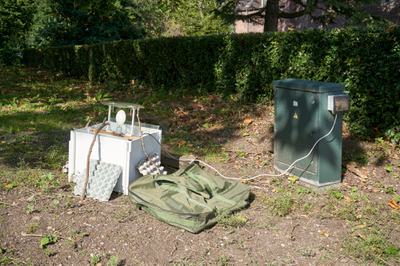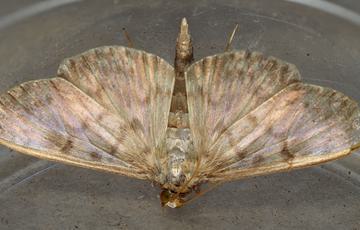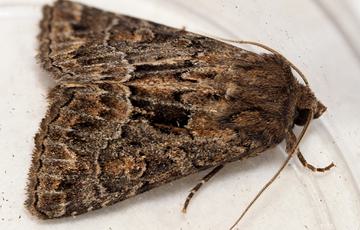News Story
We have all seen moths flying around streetlights or attracted to windows at night. This phenomenon is not just a curiosity but has been used to monitor the populations of insects using moth traps.
There are different types of moth trap, but they all work in pretty much the same way. A very bright light attracts the moths, and they are caught in a container where they rest until the trap is emptied.

The people who trap and record the moths have generated a huge amount of information about the natural world. Moths live in many different habitats and so are useful indicators of what types of environments are nearby and how healthy they are. To better understand the wildlife at Birmingham Museums Trust’s sites we have started to run moth traps at the historic properties. Our first moth trapping session was at Aston Hall. Some of the moths that we caught included:
- Canary shouldered Thorn - Ennomos alniaria
- Mother of Pearl - Pleuroptya ruralis
- Straw Underwing -Thalpophila matura
Image gallery
Once the moths are identified and recorded, they are released back into the wild.
Exactly why moths are attracted to light has been a mystery for a long time. Several theories have been suggested, but none have successfully explained this behaviour.
Recently, a team of researchers lead by Dr Samuel T. Fabian at Imperial College has suggested a new explanation. This theory is that moths are not directly attracted towards light but use light to orientate themselves as they fly. The sky is usually brighter than the ground, so if insects assume bright light is ‘up’ and keep it above them, they will fly parallel to the ground.
Artificial lights confuse this instinct, causing moths to fly with their backs towards the light. This makes them to fly around artificial light in circles and even upside down when above it. Leading to the irregular flight patterns seen around bright lights.
The paper describing this new theory has just been published. It is open access so anyone can read it here:
Why flying insects gather at artificial light by Samuel T. Fabian, Yash Sondhi, Pablo E. Allen, Jamie C. Theobald & Huai-Ti Lin. Nature Communications volume 15, Article number: 689 (2024).
by Lukas Large, Curator (Natural Sciences)





